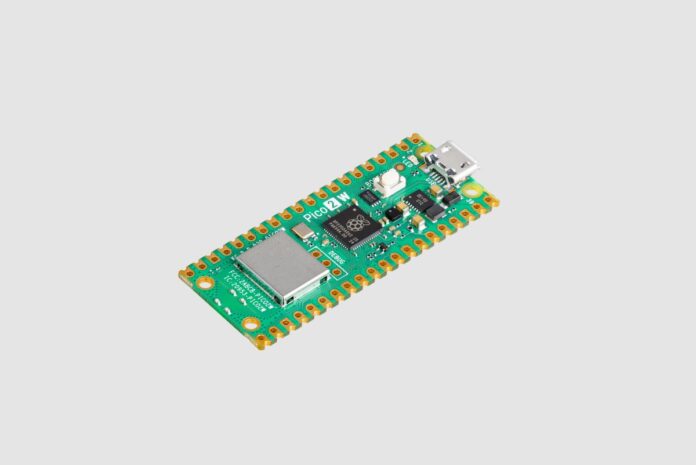Introducing the Raspberry Pi Pico 2 W, a compact board centered around a microcontroller for scalable hardware projects. Raspberry Pi once again uses the RP2350, its well-documented microcontroller.
But what exactly is a microcontroller? Microcontrollers allow you to command other electronic components or devices. Unlike regular Raspberry Pis that are general purpose computers, microcontrollers are specifically crafted to interact with various components.
Microcontrollers are typically economical, small, and highly energy-efficient. The Pico 2 W has numerous input and output pins on the sides for connecting with other components, as seen in the image above.
Most hobbyists start their microcontroller projects with a breadboard to avoid soldering. Subsequently, they may solder the microcontroller to other parts.
Unlike traditional Raspberry Pi computers, microcontrollers don’t operate on a full-fledged operating system. Instead, your code runs directly on the chip.
In addition to C and C++, the Pico 2 W supports MicroPython, a Python-inspired language for microcontrollers, for your development needs. The new board maintains compatibility with previous generation boards, both in terms of hardware and software.
The new $7 Pico 2 W boasts a dual-core, dual-architecture processor running at 150MHz. When programming for the microcontroller, you have the flexibility to choose between Arm Cortex-M33 cores and open-hardware Hazard 3 RISC-V cores.
While Arm Cortex-M33 cores are commonly used in the microcontroller industry, some may prefer RISC-V cores. Everything is configurable in software, so there’s no need to commit to one type of microcontroller when ordering new boards.
The Pico 2 W comes equipped with 4 MB of on-board flash memory for storing your code, while the RP2350 features 520 KB of on-chip SRAM. Remember, this isn’t a high-performance computer—it’s a microcontroller!
Regarding wireless capabilities, the Pico 2 W supports Wi-Fi (2.4GHz 802.11n) and Bluetooth 5.2. While it lacks 5GHz support, perhaps we’ll see that in the next iteration.
If you don’t require wireless features due to pricing or certification considerations, Raspberry Pi also offers the Pico 2 without those functionalities for $5.
Raspberry Pi’s products are gaining traction in industrial and electronics manufacturing sectors. With a majority of its sales coming from these segments, Raspberry Pi offers Pico 2 boards for individual purchase as well as in 480-unit reels.
This is what a reel of Pico 2 microcontroller boards looks like:




